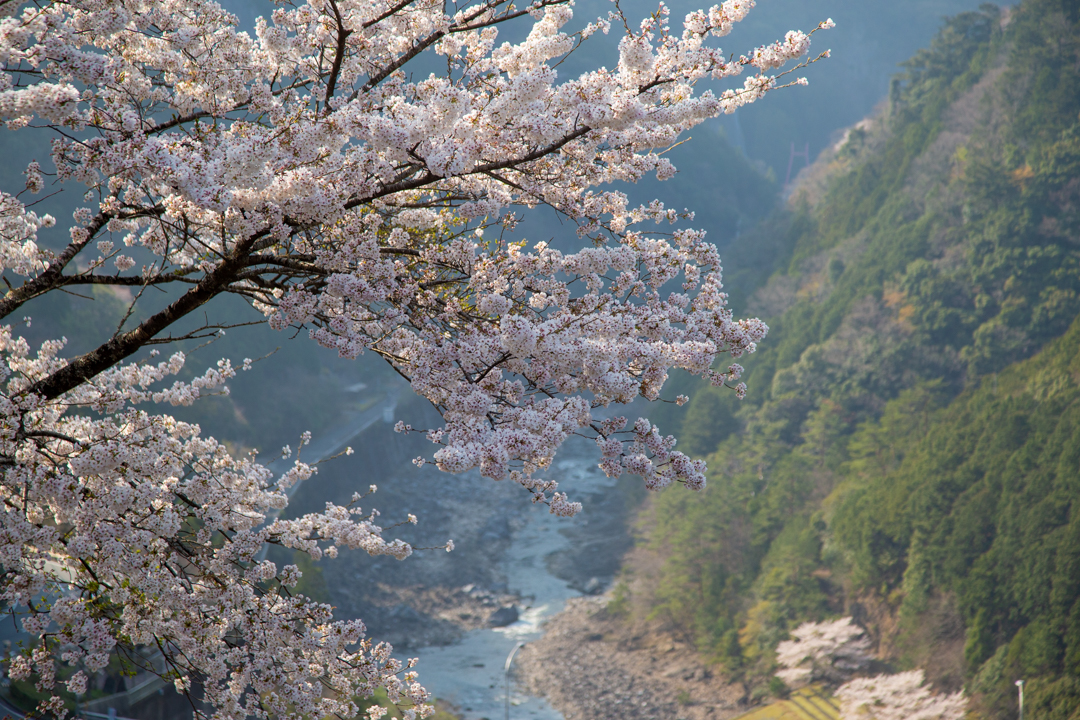そぎお・Sogio

Sogio split into two main sections: one alongside the Nakaoku tributary and one small hamlet higher up on a hill. The Junisha shrine beside the river before the road forks appears to be one of the oldest shrines in Kawakami.

Many shrines in the village and throughout Japan had makeovers in the 80’s, but the giveaway that these shrines are a part of much deeper and far-reaching spiritual traditions is the ancient trees that usually accompany the rebuilt shrines. The trees usually predate the the shrines by centuries, and in many cases very well could be replacements for trees that came before them.
As with Setodanchi and Nakaoku, the tributary that the road leading to Sogio follows hosts some of the best swimming holes and fishing spots in the village.
Sogio is also home to one of the villages top cedar barrel makers, Harumashi-san.

Harumashi-san is featured in the Yoshino Ringyo documentary that is set to be released in 2020. If you jog past his shop or are fortunate enough to have him invite you in to show you the drying room of his cedar barrel slats, you will be able to smell one of the most angelic fragrances on this planet. The smell itself is an unforgettable experience.
In addition to providing lumber for the construction of Osaka Castle, it was this type of barrel used to store sake that put Kawakami and Yoshino Ringyo on the map. The straight and knotless timber of Yoshino has been the perfect material for creating sake barrels for roughly 500 years. When sake sits in the barrels, it absorbs the taste and fragrances of the cedar and is referred to specifically as 樽酒 Taruzaké (Barrell saké) . It isn’t common outside of Japan, but it can be found in major US cities like New York and Los Angeles if you look hard enough.
An interesting factoid: the Japanese expression くだらない (kudaranai)、literally meaning “it does not go down” but colloquially meaning “trivial,” “insignificant,” or “worthless” was popularized hundreds of years ago from this Yoshino cedar barrel industry. Sake that was shipped to nearby Kobé or Osaka was not as good as the exact same saké that was “sent down” to Edo (modern-day Tokyo). Why? The sake sent to Edo had more time to slosh around in the fragrant cedar barrels on the bumpy journey.
You don’t need a time machine to taste this amazing product. There are famous sake brewers in the next-door down of Yoshino, and you can even pick up a bottle in the gift shop of Kawakami’s Suginoyu Hotel. This is certainly a must-try.

If you’re need a place to stay in Kawakami, there is a fantastic Airbnb known as Hanare that is maintained by a local family. The couple that manages this inn can pick you up from the nearest station and will provide local home-grown food for you and everything else you need to enjoy a perfect stay in this rustic village.
